Your cart is currently empty!
Month: July 2024
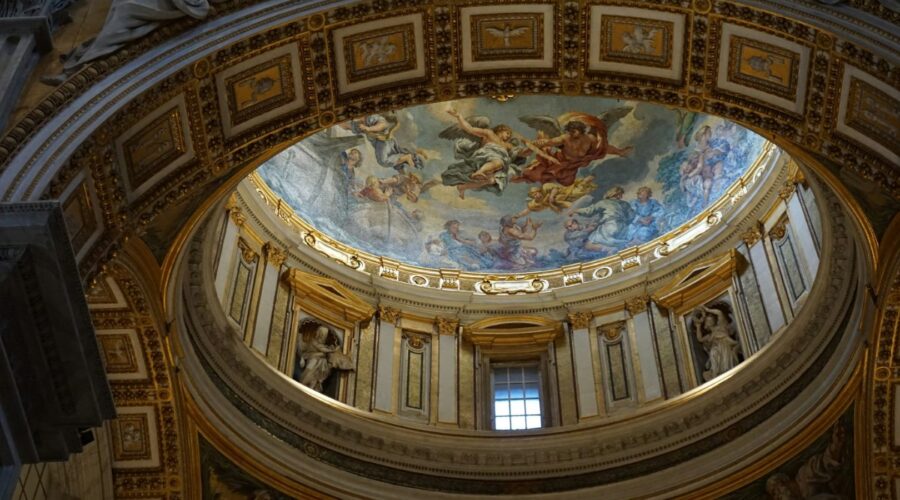
Discover the Rich History and Relevance of the Church of the Incarnation
Introduction
The Church of the Incarnation, located in New York City, is a vibrant and historic Episcopal parish that has played a significant role in American religious and cultural life for over a century. Founded in 1865, the church has a rich and fascinating history, captivating architecture, and a deep commitment to serving the community.
Historical Significance
Founding and Early Years
The Church of the Incarnation was founded in 1865 by a group of Episcopalians who sought to establish a new parish on the Upper West Side of Manhattan. The first rector, the Reverend Thomas Gallaudet, was a prominent educator and advocate for the deaf. Under his leadership, the church quickly grew and became a thriving community.
Notable Rectors
- Phillips Brooks: Served as rector from 1869 to 1891, gaining fame as a renowned preacher and advocate for social justice.
- George William Douglas: Succeeded Brooks and led the church through a period of expansion and renovation. He oversaw the construction of the present-day sanctuary.
- Harry Emerson Fosdick: Served as rector from 1919 to 1946, becoming one of the most influential preachers of the 20th century.
Community Involvement
Throughout its history, the Church of the Incarnation has been actively involved in its surrounding community. It established a settlement house, provided aid to the poor and needy, and fostered interfaith dialogue. The church continues these outreach programs to this day.
Architectural Splendor
Gothic Revival Design
The Church of the Incarnation’s iconic sanctuary is a stunning example of Gothic Revival architecture. Designed by architect James Renwick Jr., the building features pointed arches, vaulted ceilings, and intricate stained-glass windows.
Interior Features
- Altar: The reredos behind the altar depicts the Incarnation of Christ in a series of bas-relief panels.
- Pulpit: The carved oak pulpit features scenes from the life of Jesus.
- Stained-Glass Windows: The church’s vibrant stained-glass windows depict biblical scenes and figures.
Exterior Details
The church’s exterior is adorned with intricate carvings and sculptures. The facade features a rose window and two bell towers that flank the main entrance.
Theological Beliefs and Practices
Episcopal Tradition
The Church of the Incarnation is part of the Episcopal Church, a branch of Anglican Christianity. It adheres to the teachings of the Book of Common Prayer and the Thirty-Nine Articles of Religion.
Inclusive and Welcoming
The church is committed to providing a welcoming and inclusive environment for all people, regardless of their background or beliefs. It actively promotes social justice and interfaith understanding.
Worship and Sacraments
The church offers a variety of worship services throughout the week, including Holy Eucharist (Communion), Morning Prayer, and Evensong. It also administers the sacraments of baptism, confirmation, and marriage.
Current Ministry and Outreach
Community Service
The Church of the Incarnation continues to be a beacon of hope and support for its community. It operates a food pantry, provides shelter for the homeless, and offers counseling and other social services.
Arts and Culture
The church is also a vibrant center for the arts. It hosts concerts, lectures, and exhibitions, showcasing a wide range of artistic disciplines.
Educational Programs
The church offers a variety of educational programs for all ages, including Sunday School for children, Bible studies for adults, and a theological education program for aspiring clergy.
Visiting the Church of the Incarnation
The Church of the Incarnation is located at 3500 Broadway, New York, NY 10024. It is open to the public for worship, tours, and special events.
Hours of Operation:
- Sunday: 8:00 AM – 7:00 PM
- Monday-Friday: 9:00 AM – 5:00 PM
- Saturday: Closed
For more information, visit the church’s website at https://www.incarnationnyc.org/.
Conclusion
The Church of the Incarnation is a remarkable institution with a rich history, stunning architecture, and a deep commitment to serving its community. It is a place where faith, art, and social justice converge, creating a vibrant and welcoming space for all who seek it.
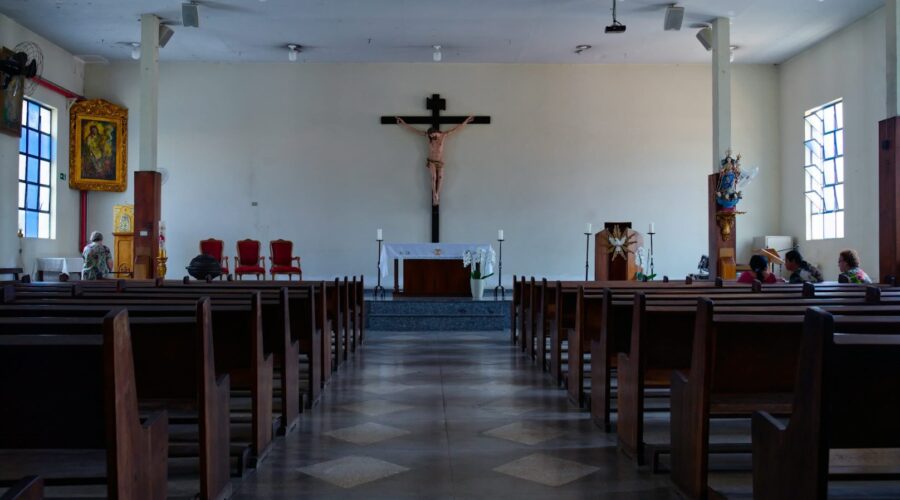
Discover the Church of Prismatic Light: A Journey of Spiritual Transformation
A Brief History
The Church of Prismatic Light is a spiritual community founded in the 1970s by a group of seekers inspired by the teachings of various spiritual traditions. Over the years, the church has evolved into a vibrant and inclusive community dedicated to personal and collective transformation.
Core Beliefs
Prismatic Light as Divine Source
Central to the Church’s beliefs is the concept of Divine Source as a radiant, multi-dimensional light that permeates all existence. This light is seen as the ultimate source of inspiration, wisdom, and guidance.
Oneness and Interconnectedness
The church emphasizes the interconnectedness of all beings and the importance of cultivating a sense of unity. Members believe that separation is an illusion and that our actions have profound effects on others and the collective.
Personal Growth and Spiritual Evolution
The church encourages its members to embark on a lifelong journey of personal growth and spiritual evolution. This process involves developing self-awareness, releasing limiting beliefs, and aligning with the Divine Source.
Practices and Rituals
Prayer and Meditation
Prayer and meditation are fundamental practices in the Church. Members gather regularly for group meditations and engage in personal prayer practices to connect with the Divine Source and cultivate inner peace.
Sacred Ceremonies
The church holds sacred ceremonies to celebrate special occasions and mark significant transitions. These ceremonies often involve music, chanting, and rituals designed to invoke the presence of the Divine Source.
Community Service
The church promotes community service as a way to express compassion and contribute to the greater good. Members volunteer their time and resources to support various charitable organizations and initiatives.
Teachings and Workshops
Weekly Services and Study Groups
The church offers weekly services that include readings, teachings, and discussions on various spiritual topics. Study groups delve deeper into specific teachings and provide opportunities for members to explore their spiritual paths.
Workshops and Retreats
The church organizes workshops and retreats that provide intensive learning experiences on topics such as energy healing, spiritual awakening, and conscious relationships.
Becoming a Member
Membership in the Church of Prismatic Light is open to anyone who resonates with its teachings and values. The process involves attending introductory events, engaging in personal reflection, and demonstrating a commitment to spiritual growth.
Benefits of Membership
- Community and Support: Access to a supportive and like-minded community that provides a sense of belonging and spiritual connection.
- Personal Transformation: Opportunities for deep personal growth and transformation through teachings, practices, and support.
- Spiritual Guidance: Access to experienced teachers and guides who can offer insights and guidance on spiritual challenges and questions.
- Contribution to the Collective: Participation in community service and initiatives that create a positive impact on society.
Conclusion
The Church of Prismatic Light offers a transformative spiritual path that emphasizes personal growth, unity, and connection with the Divine Source. Through its practices, teachings, and community, the church empowers individuals to unlock their inner potential and contribute to the creation of a more harmonious and enlightened world.
For more information and to connect with the Church of Prismatic Light, visit their website at www.prismaticlight.org.
Frequently Asked Questions
Q: What is the mission of the Church of Prismatic Light?
A: The mission of the church is to inspire and support individuals on their spiritual journeys, fostering personal transformation, unity, and connection with the Divine Source.
Q: Are there any prerequisites for becoming a member?
A: There are no formal prerequisites for membership. The church welcomes anyone who resonates with its teachings and values and is committed to spiritual growth.
Q: What is the typical membership fee?
A: The church operates on a donation-based model, and membership fees vary depending on each individual’s circumstances and level of financial support.
Q: Does the church have any political or religious affiliations?
A: The Church of Prismatic Light is not affiliated with any political party or religious organization. It respects all spiritual and faith traditions and encourages members to maintain their own personal beliefs.

Immerse Yourself in the History, Beliefs, and Impact of the Church of Ireland
A Journey through Irish Ecclesiastical Heritage
Delve into the rich tapestry of the Church of Ireland, a cornerstone of Irish history and faith. From its origins amidst ancient Celtic traditions to its role in shaping modern-day society, this comprehensive guide unveils the intricacies of this esteemed institution.
Historical Roots
- Pre-Christian Ireland: Ancient Celts held animistic beliefs and revered nature spirits.
- Arrival of Christianity: Saint Patrick is credited with introducing Christianity in the 5th century.
- Early Church: Monasticism flourished, fostering literacy and preserving knowledge.
- Norman Invasion: The 12th century invasion established the Church of Ireland, aligning it with the Roman Catholic Church.
Beliefs and Practices
- Anglican Heritage: The Church of Ireland is part of the Anglican Communion, sharing a common history and theology.
- The Bible: The sole authority for faith and practice, interpreted through reason and tradition.
- Book of Common Prayer: The liturgical guidebook, first published in 1552.
- Sermons: Preaching plays a central role in worship, often focusing on biblical exegesis and contemporary issues.
Structure and Governance
- Bishops: Ordained leaders who oversee dioceses and provide spiritual guidance.
- Priests: Clergy responsible for pastoral care, administering sacraments, and leading worship.
- Laypeople: Non-ordained members who participate fully in church life and contribute to its mission.
- Synod: The governing body of the church, composed of representatives from all ranks.
Social Impact
Beyond its ecclesiastical role, the Church of Ireland has significantly influenced Irish society:
- Education: Established and maintained schools and universities, promoting literacy and access to knowledge.
- Hospitals and Charities: Provided healthcare and social services, especially during times of crisis.
- Cultural Heritage: Preserved ancient traditions, such as Irish language and traditional music.
- Peace and Reconciliation: Played a pivotal role in peace negotiations during the Troubles.
Key Figures
- Saint Patrick: The patron saint of Ireland, is believed to have converted thousands to Christianity.
- Jonathan Swift: An influential writer and Dean of St. Patrick’s Cathedral, known for his satire, including “Gulliver’s Travels.”
- Mary Robinson: The first woman President of Ireland, a vocal advocate for human rights and social justice.
Cathedrals and Churches
The Church of Ireland boasts numerous stunning cathedrals and churches, each with its unique architectural and historical significance:
- St. Patrick’s Cathedral, Dublin: Founded by Saint Patrick in the 5th century, it is one of Ireland’s oldest landmarks.
- Christ Church Cathedral, Dublin: Built by the Vikings in the 11th century, it is the other medieval cathedral in Dublin.
- Armagh Cathedral: Located in the ecclesiastical capital of Ireland, it is the seat of the Archbishop of Armagh.
Ecumenical Relations
The Church of Ireland is committed to ecumenism, fostering relationships with other Christian denominations:
- Irish Council of Churches: Member of a national body promoting inter-church cooperation.
- Relations with the Roman Catholic Church: Joint initiatives in education, healthcare, and social welfare.
- World Council of Churches: Participates in a global fellowship of churches.
Modern Challenges and Future Directions
The Church of Ireland faces challenges and opportunities in the 21st century:
- Declining Membership: Like many Christian denominations, it has experienced a decrease in attendance and membership.
- Changing Demographics: Ireland has become increasingly diverse, requiring the church to adapt its mission and outreach.
- New Technologies: Digital platforms offer new opportunities for evangelism and community building.
Conclusion
The Church of Ireland stands as a testament to Ireland’s rich spiritual and cultural heritage. Its history, beliefs, and impact have shaped the nation in countless ways. As it navigates the challenges and opportunities of the present, the church remains committed to its mission of spreading the gospel, fostering unity, and serving society.
Whether you are seeking spiritual guidance, exploring Irish history, or simply seeking a sense of community, the Church of Ireland warmly welcomes all to participate in its vibrant and ever-evolving journey.
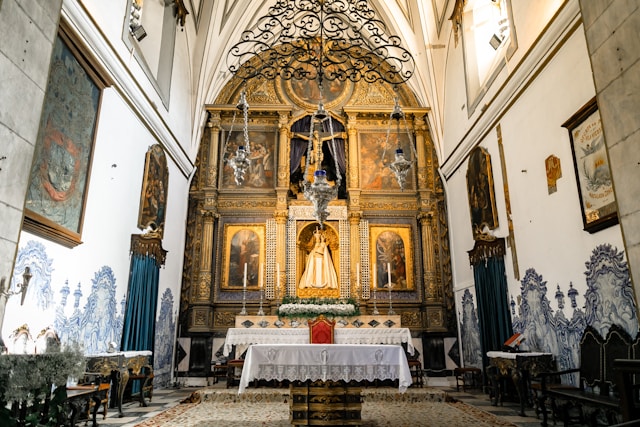
Discover the Power of Church Clubs: Fostering Faith, Community, and Growth
Church clubs are vibrant and essential groups within Christian communities that foster faith, foster relationships, and facilitate spiritual growth. They offer a space for individuals of all ages and backgrounds to connect, learn, and serve together. This comprehensive guide delves into the world of church clubs, providing a detailed overview of their purpose, benefits, and various types.
Purpose of Church Clubs
Church clubs serve a multifaceted purpose within the congregation:
- Cultivating Faith: Clubs provide a nurturing environment for individuals to deepen their faith through Bible study, prayer, and fellowship.
- Building Community: They create a sense of belonging and connection, fostering friendships and a support system within the church.
- Encouraging Service: Clubs mobilize members to engage in outreach and service projects, making a positive impact on the community.
- Spiritual Growth: They facilitate spiritual growth through organized programs, retreats, and mentoring.
Benefits of Joining a Church Club
Participating in a church club offers numerous benefits for individuals:
- Enhanced Faith: Clubs provide opportunities for deeper Bible study, reflection, and spiritual practices, leading to a stronger faith.
- Stronger Relationships: Members develop close bonds through shared experiences, activities, and common interests.
- Personal Growth: Clubs offer opportunities for leadership development, skill acquisition, and personal enrichment.
- Service to the Community: Members can actively contribute to their community through service projects and outreach initiatives.
Types of Church Clubs
There are a wide variety of church clubs available, each catering to specific interests and demographics:
Youth Clubs
Youth clubs cater to young people, providing a safe and engaging environment for spiritual growth, fellowship, and social activities.
Men’s and Women’s Clubs
These clubs offer fellowship, support, and opportunities for service specifically tailored to men and women.
Senior Clubs
Senior clubs provide companionship, spiritual support, and activities designed for older adults.
Bible Study Clubs
Bible study clubs focus on in-depth study of the Scriptures, fostering a deeper understanding of God’s Word.
Prayer Groups
Prayer groups gather regularly to pray for one another, the church, and the community.
Service Clubs
Service clubs mobilize members to engage in outreach projects, such as feeding the homeless or visiting the elderly.
Choosing the Right Club
Finding the right church club requires careful consideration of personal interests, spiritual goals, and availability:
- Identify Interests: Explore the various club offerings and choose one that aligns with your interests and passions.
- Consider Spiritual Needs: Select a club that provides opportunities for spiritual growth and development.
- Check Availability: Ensure that the club’s meeting times and activities fit within your schedule.
- Visit and Observe: Attend a few club meetings to get a feel for the atmosphere and dynamics before committing.
How to Start a Church Club
If your church does not offer a club that meets your needs, consider starting one yourself:
- Define the Purpose: Determine the specific goal and focus of the club.
- Secure Support: Seek approval from church leadership and enlist a team of volunteers to assist in planning and execution.
- Choose a Name: Select a name that clearly reflects the purpose and target audience of the club.
- Plan Activities: Develop a schedule of activities and events that align with the club’s goals.
- Promote the Club: Use church bulletins, social media, and personal invitations to spread the word about the club.
Tips for Effective Church Clubs
To ensure the success and impact of a church club, consider these tips:
- Foster a Welcoming Environment: Create a welcoming and inclusive atmosphere where all members feel valued and respected.
- Set Clear Expectations: Communicate the club’s goals, meeting times, and expectations clearly to all members.
- Encourage Participation: Actively involve members in planning, leading, and contributing to the club’s activities.
- Evaluate and Adjust: Regularly evaluate the effectiveness of the club and make adjustments as needed to ensure its continued relevance and impact.
- Seek Support: Connect with other church clubs or organizations for support, resources, and collaboration.
Conclusion
Church clubs play a pivotal role in fostering faith, community, and spiritual growth. By joining or starting a club, individuals can connect with others, deepen their faith, and make a positive contribution to their church and community. Through careful planning, effective leadership, and a commitment to serving others, church clubs can be a powerful force for good, enriching the lives of members and making a meaningful impact on the world.
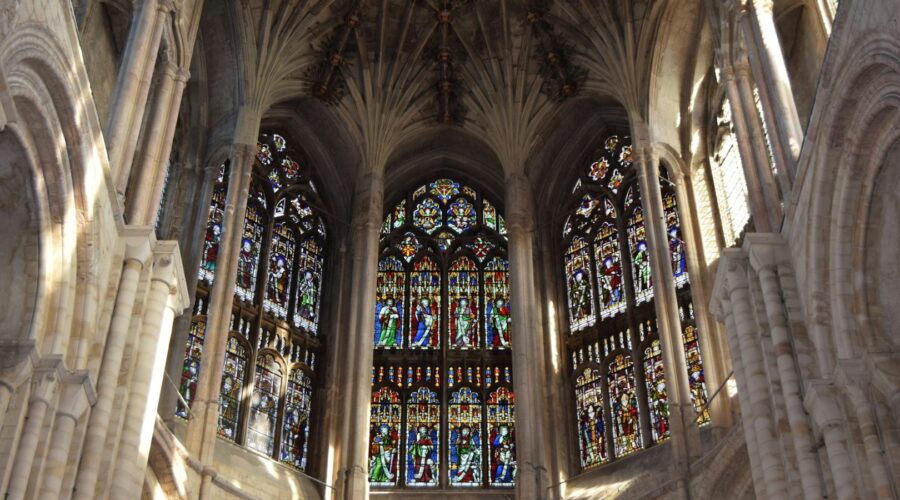
Christ the Rock: A Solid Foundation for Your Faith
Introduction
In the ever-changing landscape of belief and disbelief, finding a solid foundation for our faith can be both comforting and challenging. One such foundation is found in the person of Jesus Christ, referred to as “Christ the Rock” in the Bible. Exploring this metaphor can provide us with a deeper understanding of our relationship with Jesus and the unwavering nature of his support.
The Symbolic Meaning of Rock
Unwavering Strength:
Throughout history, rocks have represented strength and stability. When we refer to Jesus as the Rock, we recognize that our faith in him provides an unshakeable foundation that can withstand the trials and temptations of life.
Immovable Presence:
Unlike shifting sand or the volatile sea, rocks remain steadfast. Similarly, Jesus is a constant and unwavering presence in our lives, providing stability and reassurance even in the midst of uncertainty.
Refuge and Shelter:
In the Bible, caves within rocks frequently offered shelter and protection from storms and danger. By referring to Jesus as the Rock, we acknowledge that he is our sanctuary, offering safety and refuge from the storms of life.
Jesus as the Rock in Scripture
Matthew 16:18:
“And I tell you, you are Peter, and on this rock (πέτρα) I will build my church, and the gates of Hades will not overcome it.”
1 Corinthians 10:4:
“and all drank the same spiritual drink. For they drank from the spiritual Rock (πέτρα) that accompanied them, and that Rock was Christ.”
How to Build on Christ the Rock
Personal Faith:
The first step to building on Christ the Rock is to place our faith and trust in him as our Lord and Savior.
Prayer and Study:
Regular communication with God through prayer and studying his Word (the Bible) strengthens our relationship with Jesus and deepens our understanding of his teachings.
Christian Community:
Surrounding ourselves with a supportive Christian community provides encouragement and accountability, helping us grow in our faith.
Obedience to God’s Will:
Living according to God’s commandments and principles is not always easy, but it demonstrates our love for Christ and aligns us with his will for our lives.
Benefits of Building on Christ the Rock
Unwavering Stability:
When our faith is grounded in Jesus Christ, we have a firm foundation that cannot be shaken by life’s challenges.
Increased Resilience:
The strength we gain from relying on Christ enables us to face adversity with courage and overcome obstacles with perseverance.
Eternal Hope:
Building on Christ the Rock provides eternal hope, ensuring that we have a secure future both in this life and beyond.
Conclusion
In a world where foundations can crumble and beliefs can shift, Jesus Christ stands as an unwavering Rock, offering a solid foundation for our faith. By placing our trust in him, building our lives on his teachings, and living in obedience to his will, we can experience the unwavering support and stability that only he can provide.
May we all strive to build our lives on Christ the Rock, the unshakeable foundation that will sustain us through life’s storms and lead us to eternal salvation.
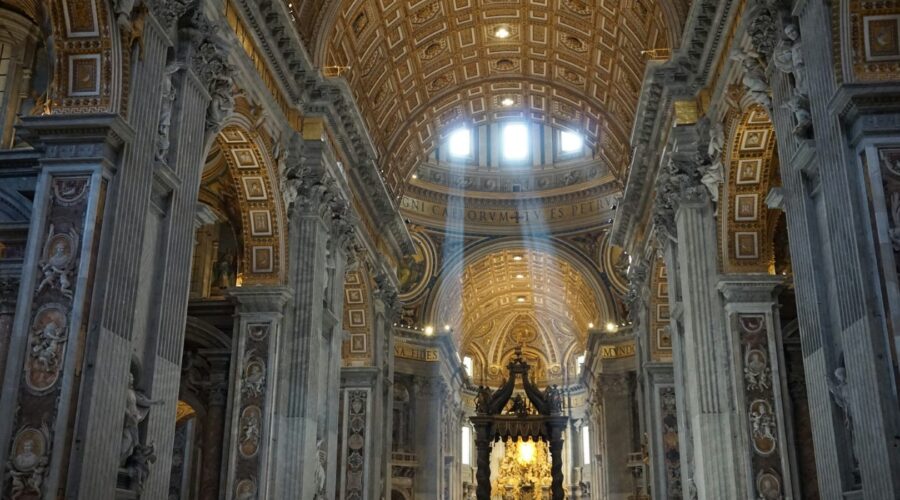
Christ the King Parish: A Beacon of Faith and Community
Introduction
Nestled in the heart of a vibrant community, Christ the King Parish stands as a testament to the unwavering faith and dedication of its parishioners. Established in [year], the parish has played a pivotal role in shaping the spiritual and social fabric of the neighborhood, offering a sanctuary of hope, solace, and inspiration to countless individuals.
A History of Service
Early Beginnings
The origins of Christ the King Parish can be traced back to the early 20th century when a small group of Catholic families gathered in a humble storefront to celebrate Mass. As the community grew, so too did the need for a dedicated place of worship.
The Construction of the Church
In [year], the dream of a permanent church became a reality. Through the tireless efforts of the parish priest and generous donations from parishioners, the magnificent structure that stands today was erected. Dedicated to Christ the King, the church has become a landmark and a source of pride for the community.
Vibrant Pastoral Life
Liturgical Celebrations
Christ the King Parish is renowned for its vibrant liturgical celebrations. From the solemn reverence of daily Mass to the joyous festivities of Christmas and Easter, the parish community comes together to worship, praise, and deepen their faith.
Sacramental Formation
The parish places great emphasis on providing comprehensive sacramental formation to its members. From Baptism to Confirmation, the sacraments are celebrated with dignity and understanding, fostering a lifelong relationship with God.
Spiritual Enrichment
Beyond liturgical celebrations and sacraments, Christ the King Parish offers a wide range of spiritual enrichment opportunities. Bible studies, retreats, and prayer groups provide avenues for parishioners to deepen their faith, grow in their relationship with Christ, and serve the community.
Engaged Community Service
Social Justice Initiatives
Christ the King Parish is committed to social justice and actively参与s in various initiatives to address the needs of the underprivileged. From food drives to advocacy for the marginalized, the parish community strives to be a beacon of hope and compassion.
Outreach Programs
The parish also reaches out to the broader community through its diverse outreach programs. These initiatives include after-school programs for children, support groups for families, and senior citizen services, fostering a sense of connection and support among community members.
Parish Leadership
The Pastor
The shepherd of Christ the King Parish is the parish priest, who is responsible for the spiritual and pastoral care of the community. The priest leads the liturgical celebrations, preaches homilies, and provides guidance and support to parishioners.
Parish Council
The parish council comprises elected members who collaborate with the pastor in making decisions regarding the direction and ministry of the parish. The council ensures that the parish remains responsive to the needs of the community and that its resources are used effectively.
Becoming a Part of the Parish
Individuals and families who wish to become part of the Christ the King Parish community are always welcome. The process is simple and involves registering as a parishioner and actively participating in the parish’s activities and ministries.
Conclusion
Christ the King Parish is a vibrant and welcoming community where faith flourishes and service to others is paramount. Through its rich liturgical celebrations, comprehensive sacramental formation, and dedicated outreach efforts, the parish continues to play a vital role in the lives of countless individuals, fostering a sense of belonging, purpose, and hope.
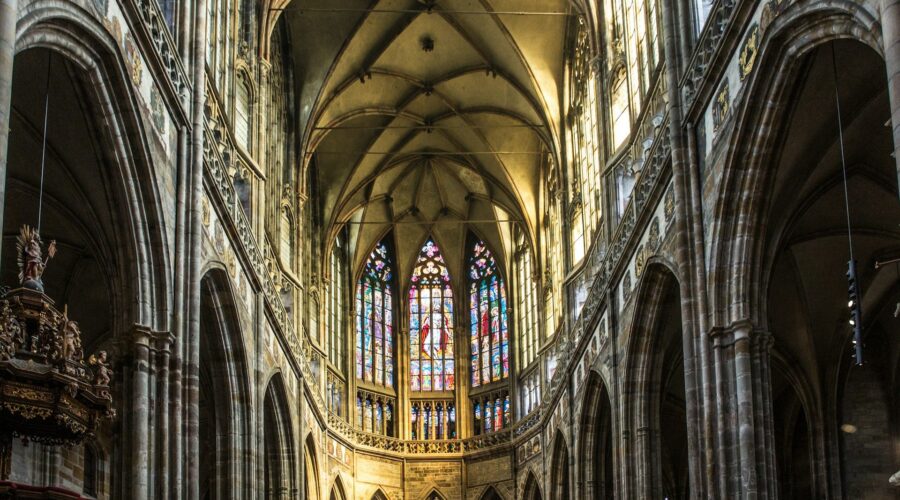
Celebrate the Reign of Christ the King 2022: A Time for Reflection and Renewal
The feast of Christ the King is a relatively new addition to the liturgical calendar, but it has quickly become one of the most important. It is a day to celebrate the universal reign of Christ and to reflect on our own role in his kingdom.
The History of the Feast
The feast of Christ the King was instituted by Pope Pius XI in 1925. At the time, the world was in turmoil. The First World War had just ended, and the rise of communism was threatening to plunge Europe into another war. Pope Pius XI saw the feast of Christ the King as a way to remind people of the importance of Christ’s reign in their lives.
The Meaning of the Feast
The feast of Christ the King is a celebration of the universal reign of Christ. Christ is not only the king of heaven, but he is also the king of earth. He has been given all authority in heaven and on earth (Matthew 28:18). This means that he is the rightful ruler of our lives.
The feast of Christ the King is also a time to reflect on our own role in his kingdom. We are not merely subjects of Christ’s kingdom; we are also his ambassadors. We are called to proclaim his reign to the world and to live our lives in accordance with his will.
How to Celebrate the Feast
There are many ways to celebrate the feast of Christ the King. Here are a few ideas:
- Attend Mass. The Mass is the central celebration of the feast of Christ the King. It is a time to come together as a community and to worship Christ as our king.
- Pray. Prayer is a powerful way to connect with Christ and to ask for his help in living out our baptismal call.
- Read the Bible. The Bible is full of passages about Christ’s kingship. Reading these passages can help us to better understand his role in our lives.
- Serve others. One of the best ways to celebrate Christ the King is to serve others. This can be done in many different ways, such as volunteering at a local soup kitchen or helping out a neighbor in need.
Conclusion
The feast of Christ the King is a time to celebrate the universal reign of Christ and to reflect on our own role in his kingdom. It is a day to come together as a community and to worship Christ as our king. It is also a day to pray for his help in living out our baptismal call.
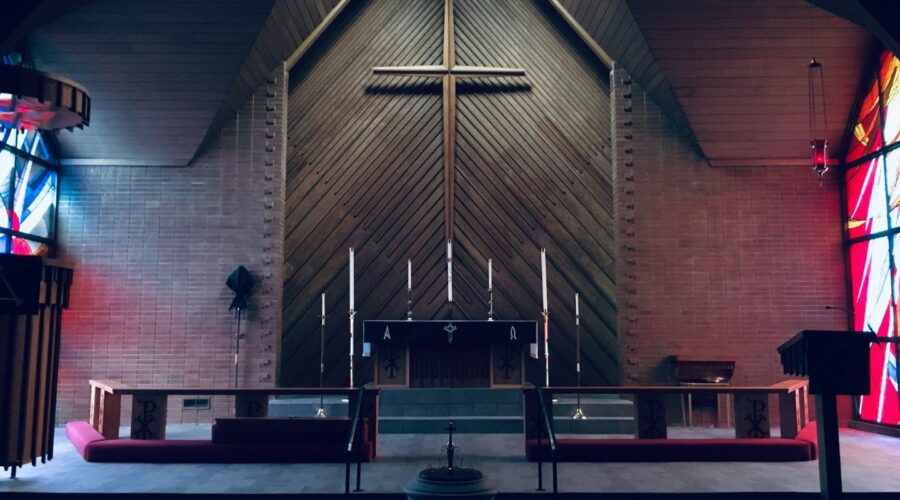
Chad Veach: Empowering a Generation Through Faith and Inspiration
Introduction
Chad Veach is an influential pastor, author, and speaker who has played a significant role in empowering a generation through faith and inspiration. Known for his passion for connecting people to God and helping them discover their purpose, Veach has built a robust global ministry that continues to impact lives worldwide.
Early Life and Background
Vocation and Preparation
Born in 1974 in Newport Beach, California, Veach felt a call to ministry from a young age. He attended Saddleback Church, where he was mentored by pastor Rick Warren and developed a deep foundation in biblical principles.
Founding Zoe Church
Planting Seeds of Faith
In 2000, Veach founded Zoe Church in Los Angeles, California, with a vision to create a church that was relevant, accessible, and transformative. Zoe Church rapidly grew, becoming one of the largest and most influential churches in the United States.
Speaking and Writing Ministry
Inspiring Hearts and Minds
Beyond his role as pastor, Veach is also a sought-after speaker and author. His messages are characterized by their authenticity, transparency, and practical wisdom. He has authored several books, including “Hope Rising” and “Unfiltered: Real Talk About Real Faith,” which have resonated with millions of readers globally.
Empowering Through Technology
Recognizing the power of technology, Veach leveraged digital platforms to extend his reach and impact. His podcast, “The Chad Veach Podcast,” features inspiring conversations with thought leaders and influencers, while his YouTube channel has garnered millions of subscribers and views.
Key Beliefs and Teachings
Grace and Empowerment
Central to Veach’s teachings is a message of grace and empowerment. He believes that God’s grace is sufficient for all our shortcomings, and that we are called to live empowered lives in Christ.
Purpose and Destiny
Veach emphasizes the importance of discovering our unique purpose and destiny. He encourages believers to seek God’s guidance and discern their path in life, knowing that they are created with a specific calling.
Community and Connection
Veach places a high value on community and connection. He believes that true growth and discipleship happen in the context of healthy relationships and authentic community.
Social Justice and Outreach
Compassion in Action
Beyond his spiritual leadership, Veach is actively involved in social justice initiatives and outreach programs. He has partnered with organizations addressing poverty, homelessness, and human trafficking, demonstrating the practical application of his faith.
Legacy and Impact
Chad Veach has made an undeniable impact on the Christian community and beyond. His ministry has reached millions of people, inspiring them to live lives of purpose, faith, and impact. His teachings continue to resonate with audiences worldwide, empowering them to find meaning and fulfillment in their walk with God.
Additional Resources
Conclusion
Chad Veach’s journey is a testament to the transformative power of faith and the importance of empowering others. Through his preaching, writing, and outreach efforts, he continues to inspire generations to embrace their purpose and live lives of meaning and significance.
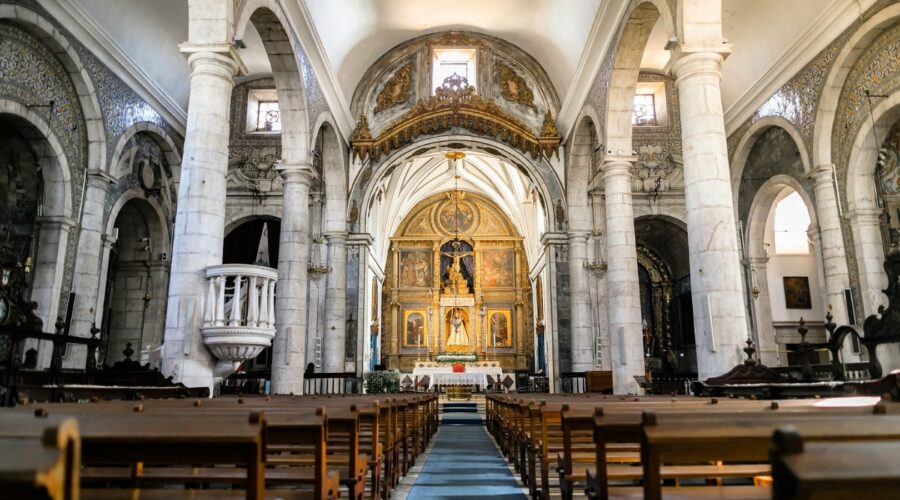
Catholic vs. Protestant: Navigating the Differences in Beliefs, Practices, and History
The Catholic and Protestant denominations of Christianity represent two prominent branches of the Christian faith, each with its distinct beliefs, practices, and historical development. Understanding the differences between these two major divisions is crucial for appreciating the diversity within Christianity and its impact on religious thought and practices.
Beliefs
Authority and Tradition
- Catholics: Believe in the authority of the Bible, but also recognize the role of tradition, papal infallibility, and the teachings of the Church as authoritative guides in interpreting Scripture.
- Protestants: Emphasize the authority of the Bible as the sole guide for faith and practice, known as “sola Scriptura.” They reject the idea of papal infallibility and the authority of tradition.
Salvation and Justification
- Catholics: Believe in salvation through faith in Jesus Christ, but also emphasize the importance of good works and sacraments in achieving eternal life. They believe that justification is a gradual process involving both faith and works.
- Protestants: Hold to the doctrine of justification by faith alone, known as “sola fide.” They believe that salvation is a one-time event, granted solely through faith in the atoning work of Jesus Christ.
Eucharist and Transubstantiation
- Catholics: Believe in the real presence of Christ in the Eucharist, through the doctrine of transubstantiation. They view the bread and wine as literally transformed into the body and blood of Christ.
- Protestants: Hold various views on the Eucharist, ranging from symbolic interpretations (memorialism) to a real presence without transubstantiation (consubstantiation).
Practices
Sacraments
- Catholics: Recognize seven sacraments: Baptism, Confirmation, Eucharist, Penance, Anointing of the Sick, Holy Orders, and Marriage. They believe that these sacraments are instituted by Christ and convey grace.
- Protestants: Generally recognize two sacraments: Baptism and the Lord’s Supper (also known as Communion). They view sacraments as symbols and rituals.
Liturgy and Worship
- Catholics: Have a structured and elaborate liturgy, typically celebrated in Latin. They emphasize the importance of the Mass, a liturgical re-enactment of the Last Supper.
- Protestants: Have diverse worship styles, ranging from traditional to contemporary. They emphasize the role of preaching, singing, and personal prayer in worship.
Clergy and Church Structure
- Catholics: Have a hierarchical church structure with the Pope at its head. Priests, bishops, and deacons hold ordained positions.
- Protestants: Have a variety of church structures. Some denominations have ordained clergy, while others emphasize the role of lay leaders.
Historical Development
Origins
- Catholicism: Originated from the Western Roman Empire and has evolved over the centuries through the influence of Church councils and papal authority.
- Protestantism: Emerged in the 16th century as a movement seeking reform within the Catholic Church, led by figures such as Martin Luther and John Calvin.
Reformation and Protestantism
- Triggering Factors: The Reformation was prompted by factors such as criticism of papal authority, indulgences, and the perceived need for a return to the teachings of the early Church.
- Key Figures: Martin Luther, John Calvin, and other reformers played pivotal roles in shaping the beliefs and practices of Protestantism.
- Impact: The Reformation led to the establishment of numerous Protestant denominations, such as Lutheranism, Anglicanism, and Calvinism.
Catholic Response
- Counter-Reformation: The Catholic Church responded to the Reformation with the Counter-Reformation, a period of reform and renewal within the Catholic tradition.
- Council of Trent: The Council of Trent (1545-1563) reaffirmed Catholic doctrines and practices, and emphasized the importance of tradition and the authority of the Church.
Examples and Comparisons
Comparison of Catholic and Protestant Beliefs and Practices Belief or Practice Catholic Protestant Authority of Scripture Bible and tradition Bible alone (sola Scriptura) Salvation Faith, good works, sacraments Faith alone (sola fide) Eucharist Transubstantiation Symbolic or real presence without transubstantiation Sacraments Seven sacraments Two sacraments (Baptism, Communion) Liturgy Structured, elaborate, in Latin Diverse, emphasis on preaching and worship Clergy Hierarchy with ordained priests, bishops, deacons Ordained clergy or lay leaders Tips for Interfaith Dialogue and Understanding
- Respect Differences: Acknowledge and respect the different beliefs and practices of Catholics and Protestants.
- Focus on Common Ground: While there are differences, both Catholics and Protestants share a belief in Jesus Christ as Savior.
- Engage in Dialogue: Participate in open and respectful dialogue to better understand each other’s perspectives.
- Share Experiences: Share personal experiences of faith and how it has influenced your understanding.
- Avoid Stereotypes: Challenge stereotypes about each other’s denominations and seek to learn from one another.
Conclusion
Catholicism and Protestantism represent two major branches of Christianity with distinct beliefs, practices, and historical development. Understanding the differences between these denominations is crucial for appreciating the diversity within Christianity. While there are theological differences, both Catholics and Protestants share a common foundation in the teachings of Jesus Christ and the belief in salvation through faith. Through respectful dialogue, interfaith understanding can be fostered, promoting unity and mutual enrichment within the Christian community.
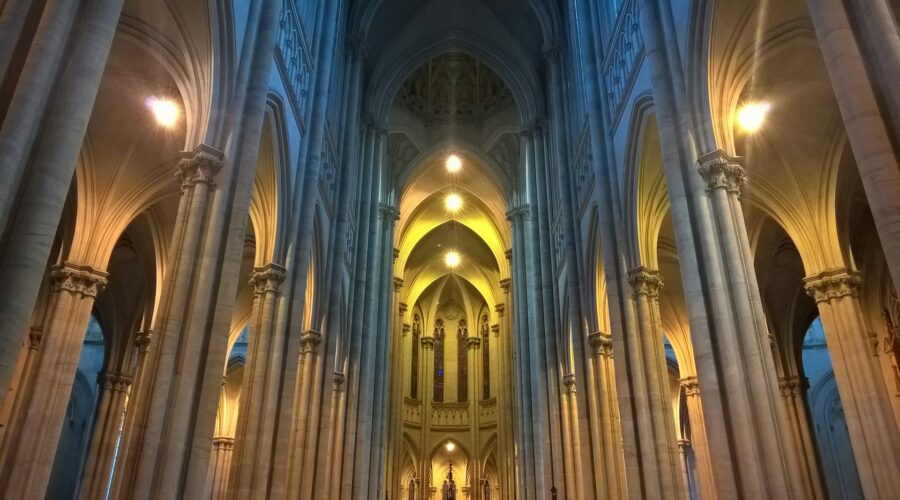
Catholic Church Communion: A Comprehensive Guide for Catholics
Introduction
Communion, also known as the Eucharist, is one of the seven sacraments in the Catholic Church and is considered the most important. It is a sacrament of unity, in which Catholics receive the body and blood of Christ in the form of bread and wine. This act of sharing in the Eucharist strengthens our bond with Christ and with each other.
The Importance of Communion
Communion is a vital part of Catholic life and holds great significance. Here are a few key reasons why Communion is important:
Nourishment for the Soul
Just as physical food nourishes our bodies, Communion provides nourishment for our souls. When we receive the Eucharist, we are receiving the very body and blood of Christ, which strengthens us spiritually and helps us grow in our faith.
Unity with Christ
Communion brings us into closer unity with Christ. As we partake in this sacrament, we are not only receiving nourishment but also sharing in Christ’s life and mission. It is a powerful reminder of our connection to the head of the Church and our role as members of His body.
Unity with the Church
Communion also fosters unity within the Catholic Church. When we gather to receive the Eucharist, we become part of a larger community of believers. Breaking bread together symbolizes our shared faith and commitment to Christ.
Who Can Receive Communion?
Only baptized Catholics who are in a state of grace can receive Communion. This means that they must not have committed any grave sins or have gone to confession recently to receive absolution. Children who have reached the age of reason (typically around 7 or 8 years old) may also receive Communion if they have been properly prepared and understand its significance.
How to Prepare for Communion
To prepare for Communion, it is important to:
- Examine your conscience and repent of any sins.
- Confess your sins to a priest if necessary.
- Fast from food and drink for at least one hour before Communion.
- Pray and reflect on the meaning of the Eucharist.
The Order of Communion
The order of Communion during the Catholic Mass typically includes the following steps:
- The priest elevates the host and chalice, saying, “This is the Lamb of God, who takes away the sins of the world.”
- The congregation responds, “Lord, I am not worthy to receive you, but only say the word and I shall be healed.”
- The priest places the host on the tongue of each communicant.
- If desired, the communicant may also receive the chalice, which contains the consecrated wine.
Tips for Receiving Communion
Here are a few tips to help you receive Communion in a reverent and meaningful way:
- Approach the altar with a sense of awe and reverence.
- Keep your hands open and extended to receive the host.
- Consume the host immediately and reverently.
- If receiving the chalice, take a small sip and return it to the priest.
- Take a moment after Communion to pray and give thanks to God.
Conclusion
Communion is a foundational sacrament in the Catholic Church and holds immense significance for Catholics. It is a sacred act of nourishment, unity, and grace that helps us grow in our faith and strengthens our connection to Christ and to the Church. By understanding the importance of Communion and preparing for it properly, we can receive this sacrament with reverence and devotion, deepening our spiritual lives and drawing closer to God.
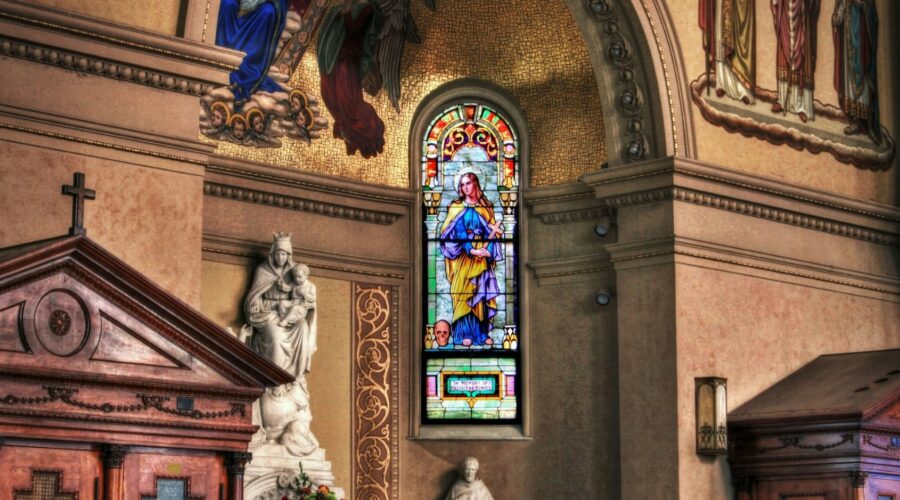
Unveiling the Grandeur of the Cathedral of the Holy Spirit: A Haven of Faith and Architectural Masterpiece
Introduction
Nestled in the heart of vibrant Gaborone, Botswana, the Cathedral of the Holy Spirit stands as an architectural marvel and a beacon of spirituality. Completed in 1996, this magnificent structure is a testament to the ingenuity and devotion of the Catholic community. This comprehensive guide will delve into the awe-inspiring details of the cathedral, exploring its history, design, remarkable features, and the profound impact it has on its congregation and visitors alike.
Historical Context
The vision for a cathedral in Gaborone emerged in the 1980s, driven by the growing Catholic population and the desire for a sacred space that would reflect the faith and aspirations of the people. Construction began in 1995, guided by the renowned architect Emílio Antunes.
Architectural Brilliance
Exterior Design
The cathedral’s exterior is a captivating blend of traditional and modern elements. Its monolithic form is adorned with intricate carvings, mosaics, and stained glass windows that depict scenes from the Bible. Two tall bell towers flank the facade, symbolizing the call to worship and the enduring presence of the Church.
Interior Design
Upon entering the cathedral, visitors are greeted by a breathtaking expanse of space and light. The soaring vaulted ceiling, supported by graceful columns, creates an atmosphere of awe and reverence. The altar, the focal point of the sanctuary, is a masterpiece in itself, adorned with precious stones and intricate carvings.
Remarkable Features
Stained Glass Windows
The cathedral boasts an impressive collection of stained glass windows that narrate the life of Christ and the saints. Each window is a vibrant tapestry of colors, creating a kaleidoscopic effect that transforms the interior space.
Mosaics
Intricate mosaics adorn the walls and pillars of the cathedral, depicting biblical scenes and symbols. These mosaics are a testament to the skill and artistry of the craftsmen who created them.
The Crypt
Beneath the cathedral lies a spacious crypt that serves as a memorial to the departed. The walls are lined with marble plaques inscribed with the names of loved ones who have passed away.
Spiritual Significance
A Place of Worship and Renewal
The Cathedral of the Holy Spirit is first and foremost a place of worship and prayer. The daily and weekly services draw a diverse congregation, who gather to share in the sacraments, listen to the Word of God, and experience the presence of the Holy Spirit.
A Symbol of Unity
The cathedral is a symbol of unity for the Catholic community in Botswana and beyond. It is a place where people from all walks of life come together in faith and fellowship.
A Haven of Peace and Reflection
Amidst the bustling city, the cathedral offers a sanctuary of peace and reflection. Its serene atmosphere invites visitors to quiet their minds, connect with their spirituality, and seek solace in the presence of God.
Impact on the Community
A Hub of Community Events
The cathedral is not only a place of worship but also a hub for community events. It hosts concerts, exhibitions, and other gatherings that enrich the lives of the local population.
A Catalyst for Social Change
The Church has been a driving force for social change in Botswana, advocating for justice, equality, and the well-being of all. The cathedral serves as a platform for community outreach programs that address the needs of the disadvantaged.
A Source of Inspiration
The Cathedral of the Holy Spirit is a constant source of inspiration for the community. Its architectural grandeur, rich history, and spiritual significance remind people of the power of faith, hope, and love.
Tips for Visitors
Respectful Conduct
When visiting the cathedral, it is important to maintain respectful conduct and observe the sanctity of the space. Silence and appropriate behavior are encouraged.
Guided Tours
Guided tours of the cathedral are available for groups and individuals who wish to delve deeper into its history, architecture, and spiritual significance.
Photography Restrictions
Photography is generally not permitted inside the cathedral, but visitors may request permission to take photographs for personal or research purposes.
Appropriate Attire
Visitors are encouraged to dress respectfully when visiting the cathedral. Modest attire is recommended.
Conclusion
The Cathedral of the Holy Spirit in Gaborone, Botswana, is a magnificent masterpiece that embodies the faith, artistry, and aspirations of the Catholic community. Its architectural beauty, remarkable features, and profound spiritual significance make it a place of worship, reflection, and community. The cathedral stands as a timeless testament to the power of faith and the enduring presence of God in our lives.
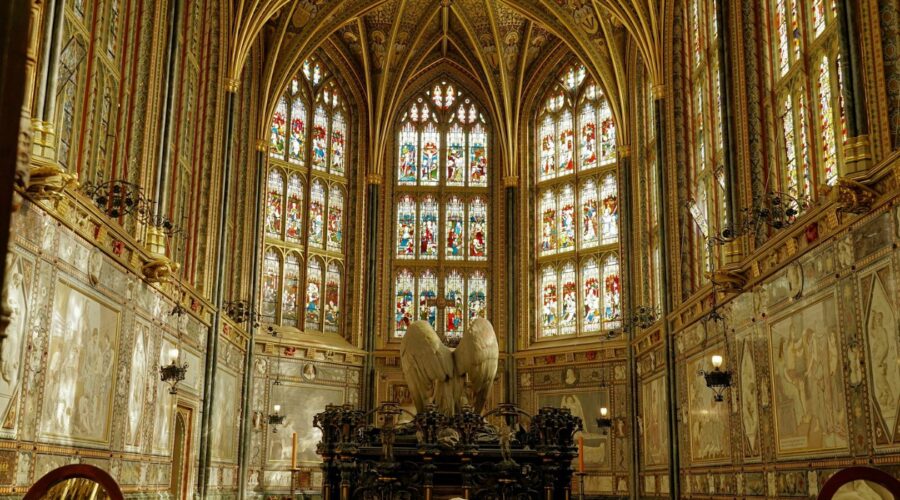
Cathedral of the Good Shepherd: An Architectural and Spiritual Haven
Introduction
Nestled amidst the bustling city of Singapore, the Cathedral of the Good Shepherd is an iconic landmark that captures the hearts of both locals and visitors alike. This majestic cathedral, with its imposing Gothic architecture and serene interiors, has become a testament to the Catholic faith and a symbol of Singapore’s architectural heritage.
History and Architecture
The origins of the Cathedral of the Good Shepherd can be traced back to the late 19th century when the Catholic community in Singapore outgrew its existing church. In 1894, the cornerstone was laid for the construction of a new cathedral, which was completed and consecrated in 1900.
The cathedral’s architectural style is a masterful blend of Gothic Revival and Romanesque elements. Its symmetrical facade features elaborate pointed arches, vaulted ceilings, and soaring spires that reach towards the heavens. The grandeur of the exterior is seamlessly complemented by the serene and awe-inspiring interiors, adorned with exquisite stained-glass windows, intricate carvings, and polished marble.
The cathedral is known for its unique octagonal shape, which symbolizes the shepherd’s crook—a symbol associated with Bishop Jean-Marie Beurel, the first bishop of Singapore.
Chapel of the Seven Sorrows
Within the cathedral complex, there is a smaller chapel, known as the Chapel of the Seven Sorrows, dedicated to the Virgin Mary. This intimate chapel provides a peaceful sanctuary with delicate stained-glass windows depicting the sorrows of the Virgin Mary.
Religious Significance
The Cathedral of the Good Shepherd is not only an architectural masterpiece but also a center of spiritual and community life for Catholics in Singapore. It is the seat of the archbishop of the Roman Catholic Archdiocese of Singapore and serves as the mother church for all parishes in the country.
Tourism and Heritage
The Cathedral of the Good Shepherd is a popular tourist destination, attracting visitors from all over the world who come to admire its architectural beauty and rich history. The cathedral is also recognized as a National Monument of Singapore, a testament to its cultural and historical significance.
Visitors are welcome to visit the cathedral during specified hours, where they can enjoy guided tours, admire the intricate details of the architecture, and learn about the history and religious significance of this iconic landmark.
Visiting the Cathedral
- Hours: Monday to Saturday: 9:00 am – 6:00 pm; Sunday: 7:00 am – 7:00 pm
- Admission: Free entry
- Dress code: Appropriate attire that covers shoulders and knees
- Photography: Allowed without flash
Preservation and Restoration
Over the years, the Cathedral of the Good Shepherd has undergone several restoration and conservation projects to preserve its architectural integrity and ensure its continued use for future generations.
Conclusion
The Cathedral of the Good Shepherd is an enduring symbol of Singapore’s architectural heritage and a testament to the Catholic faith. Its majestic structure, serene interiors, and rich history make it a must-see destination for anyone visiting the city-state. Whether you are a religious pilgrim seeking spiritual nourishment or an architecture enthusiast marveling at its intricate beauty, the Cathedral of the Good Shepherd will leave an unforgettable mark on your soul.